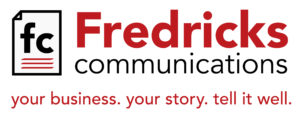Building Your Brand House
by Martin “Red” Fredricks
You know who you are, what you do and what you do better. Now you need to tell everyone else. Repeatedly and consistently.
Consistency is one of the keys to branding. In terms of copywriting and content development, that means making sure you’re saying the same things in the same and complementary ways through all message delivery channels and to all target markets. It does not mean the words or tone are exactly the same in everything; it just means you stay true to the message and to the key messages.
![]()
So how do you do it? Especially if your business or organization is more than just you, when prospects and customers are having brand-relevant interactions with lots of different people and materials and experiences? You build, and almost maniacally apply, a messaging framework. The messaging framework should guide the development of all your content, from copy for ads and brochures to content for blog posts and websites. Before your copywriter ever strikes a key, s/he should have this document in hand.
So what is a messaging framework?
Think of it as the house that encompasses your brand’s voice. You have to build the house before it’s possible to invite anyone in.
- The positioning statement is the foundation. This should not be confused with what is commonly called a “tagline.” The brand statement describes – often in very clear, plain, non-sales languages – who we are, what we do and what makes us different or better. This internal statement helps us all get on the same page before we take our communications to external audiences.
- The key message is the roof, the high-level overview of our business. If we can only convey one thing, this is it.
- Message pillars are load-bearing walls. They support the key message and begin to fill in the picture of our business and its benefits for our target markets.
- Message support points are the floor, the walls and the ceiling. They are fact-based messages that “prove out,” or support, what your message pillars convey. It’s one thing to say your product will save Joe Bloe money; it’s quite another say it’s going to save Joe cash by doing or enabling X (where “X” is something specific and, whenever possible, quantifiable). The support points fill in the gaps in our messaging by validating the pillars.
- Tone is the confluence of everything that gives the brand personality – the paint colors, surface textures, floor coverings, curtains, furniture and so on.
Once your brand messaging house is built, you can make decisions regarding how much of the building members of particular target markets want or need to see, how much time they are likely to spend in each room, and which pillars and support points are likely to motivate them.
Strong copywriting and content development on every message delivery channel will get them there.
Want to have a house warming party? Contact me.



